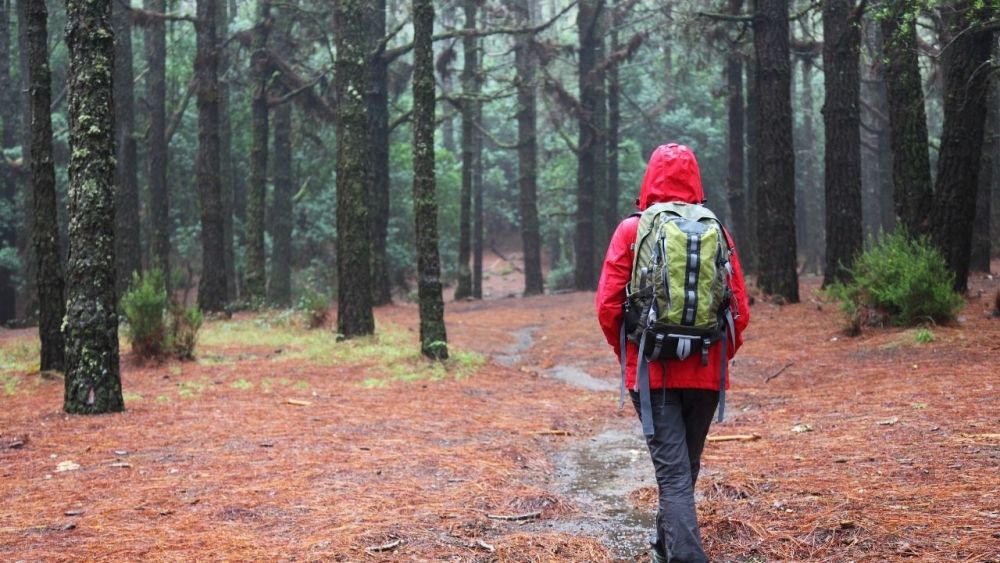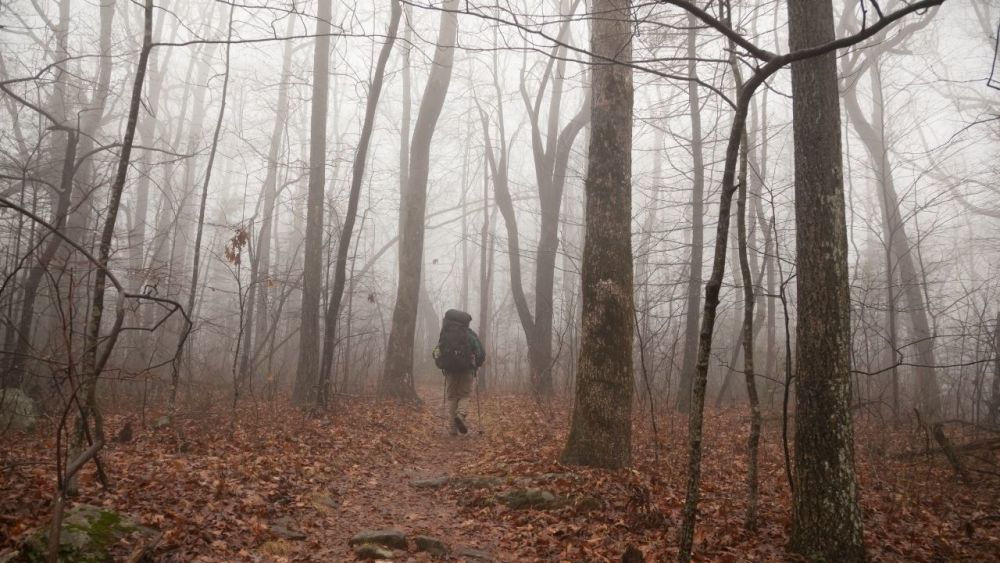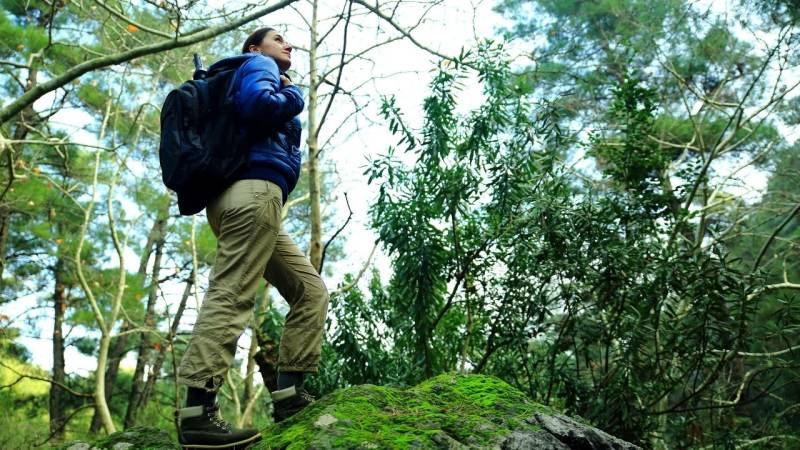What is Silent Walking? - An introduction to the wonderful meditative practice
Silent Walking is easy to learn. With these tips for beginners, you start mindfulness practice and experience its beneficial effect.


From Martin Gebhardt. Check out my “About me” page.
👉 The key facts from this guide
- Silent Walking is a form of meditation through mindful, slow walking in nature.
- By consciously perceiving each step, you find peace and increase your concentration.
- The practice helps you reduce stress and establish a deeper connection with nature.
- Choose a quiet, distraction-free place and walk slowly, upright and mindfully.
- The silence while walking allows for inward focus and reflection on your thoughts.
- Regular Silent Walking improves your well-being and quality of life.
Have you ever wondered how you can find more peace in our hectic world?
That's how it used to be for me. Always being available, always busy - my thoughts were constantly circling.
When I started meditating a few years ago, I was investigating how to integrate my mindfulness practices into my daily life.
One day, I read about Silent Walking.
The mindful, silent walking.
I was immediately fascinated and decided to give it a try.
On a sunny spring morning, I set off on a lonely forest path near my house
I took a deep breath, closed my eyes, and felt my feet on the ground.
Slowly, I placed one foot in front of the other, consciously perceiving the ambient sounds.
After the first few minutes, something magical happened.
My clear mind, the bird songs, and the rustling of the leaves filled me with deep satisfaction.
I walked for about an hour without saying a word or looking at the clock.
When I finally turned back, I felt grounded and balanced.
Since that day, I have been practicing Silent Walking regularly.
It is a source of inspiration for me and brings clarity in stressful times.
I can recommend it to anyone looking for a simple method to arrive in the here and now.
Try it out, you will be thrilled!
In this article, I will show you how to get started with Silent Walking.
What is Silent Walking?
Silent Walking is a meditative practice based on mindfulness and movement. It is a form of walking in silence, with the focus on conscious awareness of movement and surroundings.
Unlike ordinary walking, where we often mindlessly move forward, Silent Walking requires a conscious presence and attention to every step we take.

So Silent Walking is about bringing the body and mind into harmony.
It is a way to detach oneself from the hustle and bustle of everyday life and achieve a state of calm and serenity.
By consciously perceiving walking, you can focus on the present moment and calm your thoughts.
Preparing for Silent Walking
Before you start Silent Walking, you prepare yourself a little for it.
Here are some steps you can follow:
- Choose a quiet place: Find a place that is free from distractions and where you feel comfortable. This can be a park, a forest, or a quiet pathway.
- Comfortable clothing: Wear comfortable clothing and shoes that allow you to move freely. This will enable you to move freely and focus on your steps.
- Thirst and hunger: Take care of your body's basic needs such as thirst and hunger beforehand, so they don't become distractions.
- Just you and your body: Make sure it's just you and your thoughts. No phone, no podcast, no music, no friends, no dog.
- Breathing: Take a few deep breaths to relax and come into the present moment. Breathe in and out slowly, releasing any tension.

The Process of Silent Walking
Silent Walking can be practiced in various ways.
Here is a basic guide on how to get started with the practice:
- Start slowly: Begin at a slow pace and know how each step feels. Feel the contact of your feet with the ground and pay attention to the sensation of walking.
- Conscious awareness: Direct your attention to your movement. Notice the movement of your legs, the swing of your arms, and the rhythm of your breath. Let go of all thoughts and worries and fully focus on walking.
- Connection to nature: If you are walking outdoors, consciously observe your surroundings. Pay attention to the sounds of nature, the wind on your skin, and the surrounding colors. Let yourself be inspired by the beauty of nature.
- Mindfulness in every step: Be aware that each step is unique. Notice the sensations in your body and the changes in your environment. Be present and mindful in every moment.
Quiet walking allows the mind to transition into a different kind of calm and focus.
The Benefits of Silent Walking
Silent Walking offers various benefits for the body and mind. Here are some of the possible positive effects:
- Stress reduction: Silent walking can help reduce stress and achieve a state of relaxation. By consciously perceiving walking, you can free yourself from burdensome thoughts and worries.
- Improvement of concentration: By focusing on each step, you can improve your concentration and extend your attention span. This can have a positive impact on your everyday tasks and activities.
- Connection with nature: When you walk outside, you can establish a deeper connection with nature. The beauty of the surroundings can have a calming effect and convey a sense of connection and serenity.
- Promotion of mindfulness: Silent walking is a form of mindfulness practice. By consciously perceiving walking, you can train your mindfulness and be present in the current moment.
- Enhancement of well-being: Silent walking can lead to a general sense of well-being and satisfaction. It can contribute to feeling more balanced and refreshed.

Silence is Golden: The Effects of Silence on Consciousness
Silence has a calming and clarifying effect on our consciousness.
In silence, we find peace, our mind can switch off.
Without constant noise and distraction, we can concentrate better and organize our thoughts.
Studies indicate that just a few minutes of silence can reduce stress and increase our attention span.
In silence, our focus returns to the essentials. We become more creative and relaxed.
Silent Walking uses this effect to sharpen our awareness through mindful walking in silence.

The rules of a silent walk
When practicing Silent Walking, there are a few important rules to keep in mind:
- Absolute Silence: Avoid music and phone calls. The full concentration is on walking.
- Slow Pace: Walk consciously slowly and pay attention to every step.
- Distract-free Environment: Find a quiet place without disturbing noises or crowds.
- Inner Focus: Instead of observing the surroundings, feel your body and thoughts.
- Accept Feelings: Allow yourself to perceive thoughts and emotions without judging them.
- Stay at the moment: Redirect your attention back to your steps and breathing.
These rules ensure optimal effects of Silent Walking. They help to find peace and focus inward.

The Origins of Silent Walk?
Silent Walking has its roots in various mindfulness-based practices such as meditation and yoga. Slow, conscious walking has long been a part of Eastern meditation traditions.
Recently, Silent Walking has become increasingly popular in the West.
The increased sensory overload in our modern world brings the benefits of silence and deceleration into sharper focus.
Practices like forest bathing, mindful walks, and wandering are precursors to silent walking. The combination of silence, nature, and walking turns out to be particularly effective in finding peace.
So Silent Walking has developed into its method that combines the positive aspects of various approaches. It offers an easily implementable form of meditation for our hectic everyday life.

The special value of silence during a walk
In Silent Walking, silence holds a special significance. Why is it so valuable?
- Silence enables inward attention. Without distracting noises, you can fully focus on your thoughts and feelings.
- It promotes relaxation. Without external input, your mind can rest. Your nervous system can regenerate.
- You hear the subtle sounds of nature more consciously. Birdsong and the rustling of leaves are perceived more intensely.
- In silence, you connect more deeply with yourself. You hear the quiet impulses of your intuition and find clarity.
- Silence supports and deepens the effects of conscious walking. It enhances the meditative effect of silent walking.
So silence allows for direct access to your inner self and supports your self-reflection. Give it a try!
Tips and Tricks to Appreciate Silence and Enjoy a Silent Walk
Here are some useful tips to fully enjoy the beneficial effects of silence during silent walking:
- Go slowly at the beginning and listen to the sounds of nature. Try to perceive them more intensely than usual.
- Breathe deeply in and out. Focus on letting go of thoughts while exhaling.
- If distraction arises, gently bring your attention back to your steps.
- Feel how your body moves while walking. Consciously perceive each body part.
- Allow emotions and thoughts to come and go without judging them. Accept them with gentle curiosity.
- Gradually extend the duration of your silent walks to deepen the effects.
- Walk with an attitude of gratitude for the power of silence and its positive impact.
Enjoy Silent Walking as a break from the noise of everyday life. The silence gives you valuable moments of clarity and peace.

FAQs about Silent Walking
What is the difference between Silent Walking and normal walking?
The main difference between Silent Walking and normal walking lies in the conscious perception and attention dedicated to the process of walking in Silent Walking.
During normal walking, we are often thoughtless and let our minds wander. However, during Silent Walking, we fully concentrate on the present moment and the sensations of walking.
Can I practice Silent Walking anywhere?
Yes, Silent Walking can be practiced anywhere as long as you find a quiet place where you feel comfortable. You can practice in nature, in a park, on a sidewalk, or even in your garden.
Just choose a place that is free from distractions and where you can focus on your steps. If it's too noisy, you can also get in-ear headphones with noise-cancelling.

How long should I practice Silent Walking?
The duration of Silent Walking practice can vary. It is recommended to start with short sessions of about 10 to 15 minutes and gradually increase the duration as you feel comfortable.
You can practice Silent Walking daily or incorporate it as a regular practice into your routine.
Can Silent Walking improve my physical fitness?
Silent Walking is not an intense physical exercise, but it can still contribute to improving physical fitness.
By consciously walking and focusing on the movement, you can improve your posture, strengthen your muscles, and train your coordination. It is a gentle form of exercise that is good for your body.
Can Silent Walking Calm My Mind?
Yes, Silent Walking can help calm your mind and achieve a state of relaxation.
By consciously perceiving walking and focusing on the present moment, you can calm your thoughts and achieve a state of serenity.

Are there any scientific studies on the effects of silent walking?
Although there are limited scientific studies on Silent Walking, some research suggests that this practice can have positive effects on well-being.
For example, it has been found that Silent Walking can reduce stress, improve concentration, and enhance overall well-being. However, further research is needed to confirm these findings.
Final Thoughts: Learning to Enjoy the Silence
Silent Walking is a meditative practice that allows us to come into the present moment and harmonize body and mind.
By consciously perceiving walking, we can reduce stress, improve our concentration, and establish a deeper connection to nature.
Silent walking can be a valuable addition to our daily routine and help us lead a life of mindfulness and serenity.
Try it out and experience the positive effects on your well-being and quality of life.
You're really into reading right now? Then I recommend these themed guidebooks:
- Wandering: Why being aimless connects you more strongly with nature
- Nature connection is not just important - it is enormously important! The power of nature connection
- Go barefoot! Numerous reasons why you should do it today - a treat for body and mind


Author of the guide
Martin Gebhardt
Hey, I'm Martin. On my blog, you will learn the basics and numerous details about living in the wild. I think survival, bushcraft and the good life in nature are the keys to happiness. Find me here on Instagram or on YouTube. You can find more about my mission on the About Me page.
Was this guide helpful?
12 people found this guide helpful.
5.00 out of 5 points (12 Ratings)
Comments (0)
This post may contain affiliate links. So if you click on the links and make a purchase, I will receive a small commission at no additional cost to you. Click here, to learn more about it.



